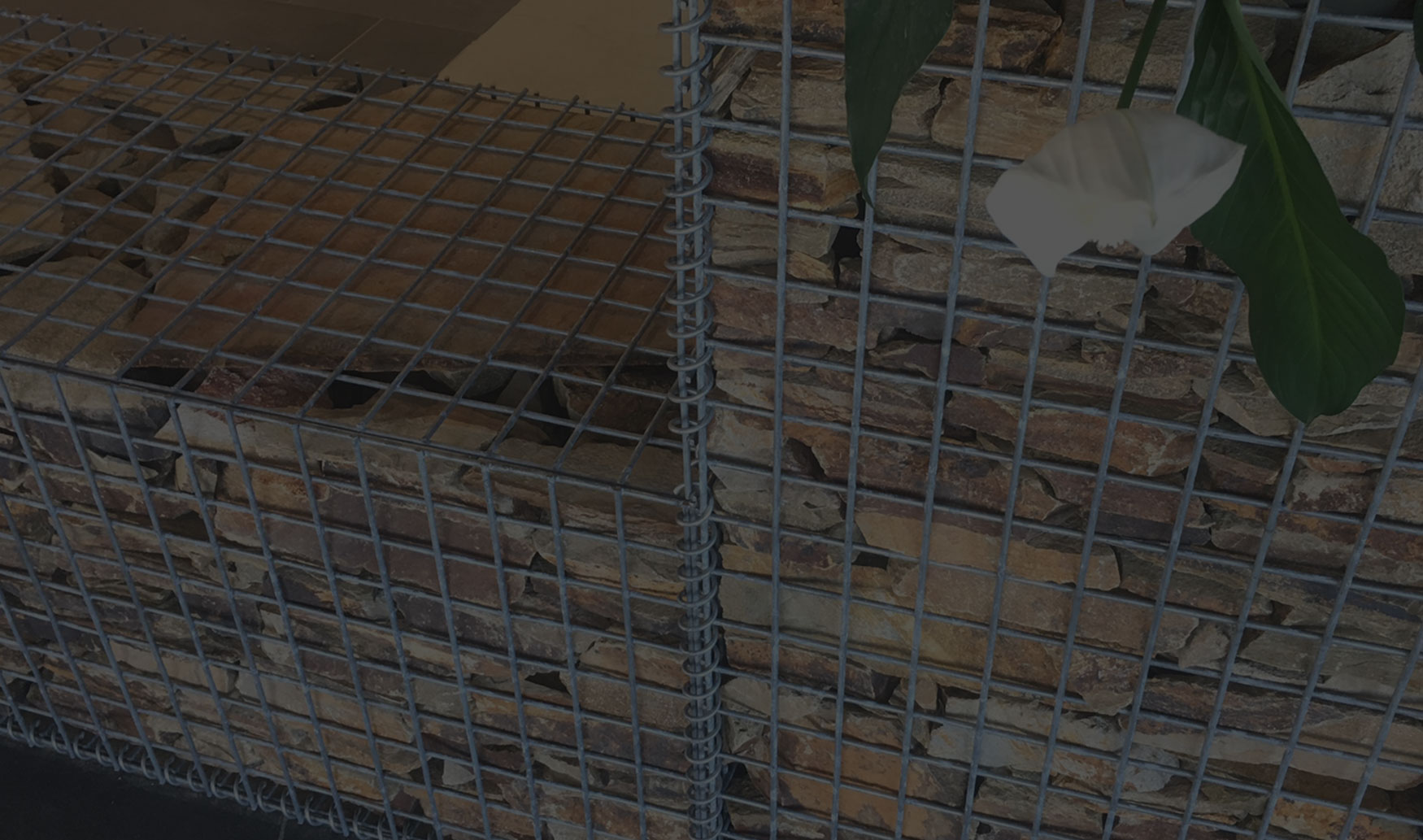
Gabion baskets full of spectacular looking rock filling is a growing trend in Australia as a new approach to dealing with a retaining wall. They can be more cost effective and easier to install than traditional sleepers but less cumbersome and difficult to manoeuvre than concrete or sandstone blocks. The best part is you don't need to have 25+ years as a landscaper to build one. Simple wire mesh panels and spiral winders make building a small retaining wall very easy. Here's some tips that can help.
All gabions are made from hot dipped galvanised 5mm gauge steel with a 50 x 50mm aperture (mesh gap). These features may not sound important but it is. Here's why:
Check out a range of different real world installations in the gallery. See an example of different rock fillings available from Yarrabee & Castlemaine Stone.


The limits of height you can build a gabion rock retaining is really only limited to your needs. Baskets can be used to divide or step gardens by as little as 300mm or can be used to build a side of a house. It all comes down to stability and above a certain height, engineering approval. Find out more detail on considerations of how high you can build a retaining wall here.
Here are 4 common approaches to think about when determining the height of your rock retaining wall:


Each state of Australia has different regulations of the acceptable height of retaining walls without engineering approvals. This allows you to build a retaining wall without approval from your council and an engineering study. In Queensland, councils will allow you to build a retaining wall less than 1 metre in height without a permit or building approval.
This height restriction applies to the following councils: Brisbane City, Ipswitch City, Redland City, Gold Coast City, Logan City, Scenic Rim, Southern Downs, Lockyer Valley, Moreton Bay, Somerset, Toowoomba, Sunshine Coast, Noosa, Gympie and South Burnett Regional council.
Gabion baskets can come in a range of sizes since they're built from a combination of steel wire mesh panels and spiral winder joiners. This gives you a wide variety of flexibility when it comes to finalising on the size basket you need.

There are a number of challenges when using large gabions. Here's some considerations:
The most common form of delivery for all gabion baskets is flat packed on a wooden pallet (see below). The gabions are constructed into their finished shape onsite in situ when ready for filling. You would never build the basket and fill with rock and try to move into position - the basket will be very heavy and not possible to move by hand. The installer building the retaining wall will physically take the steel mesh pieces from the pallet and erect into a basket form and place in it’s final resting position (in retaining wall).
To find out what you get with your gabion basket flatpack
When you consider this, moving steel mesh sheets of 1000mm x 500mm in size are far easier to handle by one person than sheets of 1000mm x 1000mm. Gabion baskets made up of wire mesh panels of 1000mm x 1000mm in size is about the maximum size that can be handled by 1 person. Panels of a larger size will require more people (at least 2) to put together. Refer to the demo video to see an example of a 1000mm x 500mm basket being put together.

Smaller gabion walls (or larger gabion walls built in stages of smaller sections) allow you to physically reach the bottom of the basket. This is very helpful when you're trying to place the rock filling. If you're trying to reach down from a 1m high basket or even worse, get a wheelbarrow up high to tip rock in, you're going to struggle.
For gabions placed on the ground, you can simply wheelbarrow your rock filling directly into the top of the basket then attach the lid mesh. You do not require any loaders or bobcat’s to scoop the rock and fill the basket from an unmanageable height.
Here's a good example: Say you wanted to build a achieve a a 2m long gabion rock wall that is 300mm deep and 500mm high. Rather than trying to achieve this with one large basket, we can use a combination of different standard panel sizes as follows:
Rather than try and handle one 2m monster basket, you can build this in situ one panel at a time. Notice how the 1 off 500x300mm panel is used as a central panel? This means that this setup is more cost effective than buying 2 individual baskets butted up together because one end panel is now redundant. It also ties all the other panels in together nicely with the spiral winder (not shown).

Smaller gabion baskets installed on top of one another allow for a centre support that runs horizontally through the middle of your retaining wall. This ensures your rock filling stays consistent throughout the basket, preventing bellowing. Over time, rock filling cannot slowly sink deeper into the basket causing bellowing due to the weight and pressure of the rock. The larger the basket, the more likely bellowing is to happen because the less wire mesh is available to support it. Such an effect will eventually destroy the shape of the wall and it’s functionality.

Refer to Avoiding the bulge for more information on how to stop your gabion baskets bellowing.

All baskets can be built without any special tools taking 5 - 7 minutes each.
